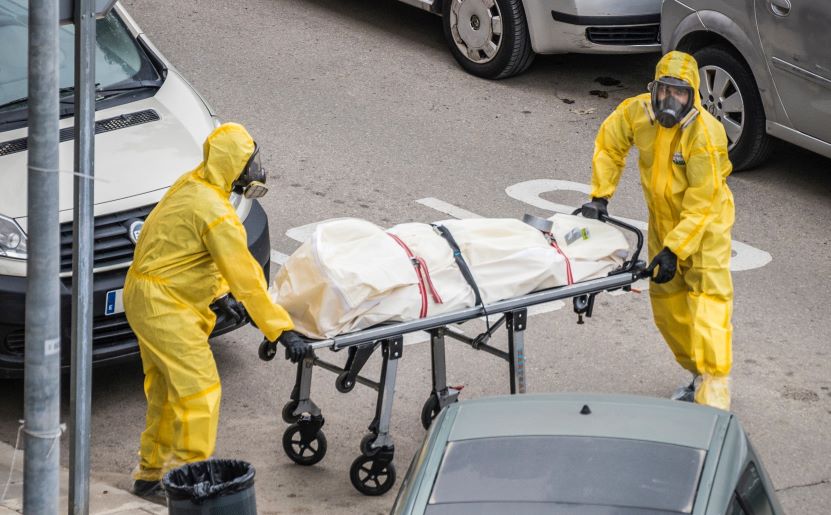“Yesterday is not ours to recover, but tomorrow is ours to win or lose.” — Lyndon B. Johnson
Many of the lessons we learn in life are learned when we are children. The one I remember most vividly is learning to ride a bike. I was a stubborn child. I refused to wear any safety gear (it was the early 90’s) and I took off without my training wheels. The first time I fell, I scraped my knee and then decided that knee pads might be alright. The second time I fell I scraped my elbow and suddenly elbow pads didn’t seem like a bad idea either. You can see where this is going.
Sometimes hazards make themselves apparent (I didn’t need to be told to avoid crashing my bike into a wall) and sometimes we experience them firsthand before we recognize their significance and take action.
Written in Blood
The term “written in blood” isn’t new. It’s a term that’s been used to describe history for centuries. When we talk about safety rules and procedures being “written in blood”, we mean they came about from a previous incident that caused an injury, property loss incident, or fatality.
The most well-known instance of safety regulations being “written in blood” occurred in the aftermath of the 1986 nuclear disaster at Chernobyl. After the meltdown, new regulations on nuclear safety were adopted. The International Labour Organization and other international agencies implemented international standards and safety guidelines, including the International Basic Safety Standards for Protection against Ionizing Radiation and for the Safety of Radiation Sources and, in cooperation with the International Atomic Energy Agency and other international organizations, issued a publication in 2002 on “Preparedness and response for a nuclear and radiological emergency”.
Incidents happen. It doesn’t matter how many changes we make or regulations we enact – zero risk is impossible to achieve. However, each disaster offers an opportunity for new safety lessons, so how do we learn?
The Incident Investigation
An incident investigation has two main purposes. The first is to determine what happened and the second is to prevent whatever happened from happening again. This means incident investigations are vital to improving safety – which also means that it’s imperative that they are done correctly. Incident investigations that are not completed thoroughly and carefully by the appropriate individuals can do more harm than good.
Incident investigations should be conducted be someone who has been trained to do them. They look for what is responsible, not who. Incident investigations should never seek to place blame on an employee. The purpose is to look for flaws in the system, not a reckless individual. Incidents are more likely a series of errors or faults, very rarely are they the fault of a single person or event. It can be difficult to acknowledge inadequacy within a process or procedure but doing so honestly and openly is the best way to improve both safety and reliability.
Reactive Safety
An incident investigation may result in the awareness of a need for more safeguards, a change in procedure, an equipment failure, etc. Change made in the aftermath of an incident to prevent the incident from happening again is known as reactive safety. One of the perceived advantages of reactive safety is that is saves money. Spending money to prevent an incident that might not even happen isn’t appealing from a budgetary standpoint. However, both the direct and indirect costs of a workplace injury that could have been prevented are often greater in the long run than spending the money up front to protect your employees.
A second problem with reactive safety is the message that it sends to employees. If an organization only reacts once an incident has occurred, it says loud and clear that profits are more important than employee well-being. Would you want to work for that organization? I wouldn’t.
Proactive Safety
While reactive safety occurs after an incident, a proactive response to safety takes place before an incident has occurred. It anticipates and tries to prevent incidents. The most important safety lesson an incident can teach is proactive safety. When we learn from incidents, the reactive safety measures of one organization become proactive safety for another. While it may be less cost-efficient up front, proactive safety is always the less expensive long-term solution due to fewer incidents and injuries.
Proactive safety measures might include:
- Incident investigations to fix the system, not place blame
- New safeguards
- Safety teams
- Hazard analysis programs
- Safety education and training
- Inspections
These are just a few of the tools, techniques and procedures available to a proactive safety program. Using methods such as these to form a proactive safety management structure sends a more positive message to employees. Not only does it encourage a more positive safety culture, it lets employees know their employer cares about their well-being, not just the bottom line.
The Time is Now
The safety response at Chernobyl was reactive. The new regulations and resources were a response to an incident that killed dozens of people. Chernobyl had a reactor design that was permitted to be built despite some known problems. What if the reactor design was never approved after a hazard analysis? Could a more proactive approach have saved the lives that were lost? The world is still learning valuable safety lessons from the disaster at Chernobyl, but it didn’t have to happen. The time to address safety is always now.
Written in Ink
What is important in the aftermath of any incident, whether it be a bike crash or an industrial disaster, is that we emerge on the other side of it armed with new knowledge and understanding. The risk of an activity can never be zero, but we can learn from our incidents and be proactive in our approach to safety. Then maybe, one day, our safety regulations will be written in ink, not “written in blood.”
